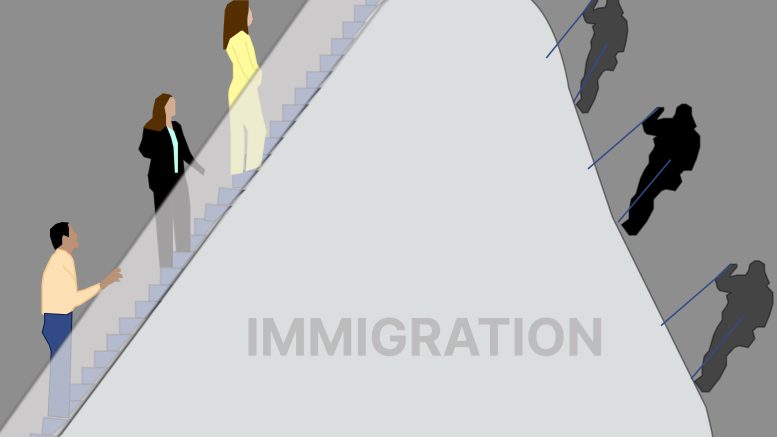Lately, I have been feeling that the only thing certain about life is uncertainty. This thought is well-aligned with the current immigration system operating in Canada. As Canada appears to embrace its role as a global leader in immigration, the provincial and federal landscapes provide a unique spectrum to examine the nuances of the immigration system.
That said, no system is complete without its baggage of flaws and loopholes. When Canada opened its gates after the COVID-19 pandemic, students and aspirants rushed to secure admission at top academic institutions around the world.
I happen to be one of them. About seven months after graduating high school, I vividly remember receiving an envelope with my passport that had my Canadian travel authorization. I grew up watching Bollywood films, which portrayed the glamorous lives of students going to schools with large campuses and impressive infrastructure.
I had some preconceived notions about my life as an international student. Although it matched some of the expectations, it didn’t turn out to be a picture-perfect life.
I recall being a newcomer with no knowledge of how the world worked. Now, being a third-year U of M student, I am still on the learning curve.
I landed a part-time job in a restaurant close to my then residence to help pay for my expenses. I hopped from one job to another in the quest for personal growth. However, at the time, off-campus working hours for international students were limited to 20 hours per week. Major relief was felt in 2022 when the government announced a temporary policy of allowing selected students to work beyond 20 hours off-campus to address the countrywide labour shortage from Nov. 15 onwards. This move caused quite a lot of international students to better allocate funds to their expenses and even help pay their tuition.
The new policy was a double-edged sword because while a bunch of students were making the most of it, the new inflow of students had a hard time putting food on the table since there were no positions available.
Part-timers had the opportunity to sign up for full-time roles since the government had temporarily lifted the weekly limit of off-campus working hours for selected batch of students. This puts things into perspective as to whether the new policy curbed the labour shortage or boosted it.
Nevertheless, just a few weeks ago, I remember being at St. Vital Centre and I saw several students with stacks of resumes walking into every single store and asking if they were hiring. It took me back to my hustling days when I walked from store to store asking, “Hi! Are you hiring?”
However, that policy ended Apr. 30, 2024, and we are back to the 20-hours-per-week cap on the off-campus working hours protocol.
I have seen both sides. I have been a struggling student who roamed from one shop to another, hoping for someone to give me an opportunity. I have also been on the other side of the counter where people have approached me to inquire about any openings in the store. I empathize beyond words with the current struggles of my peers and fellow international students.
Now that I have my feet on comparatively solid ground, I try to reach out and do something for the international community because those actions culminate into moments that we cherish and form a legacy.
I remember when I had a new roommate who had just arrived in Winnipeg, and he made me speak to his parents to ensure he was not alone. As an employee of the university, I deal with a wide range of international students trying to come to terms with their new life. I share with them my personal stories and experiences that help them understand that the end result is worth the hustle and struggle.
Recently, our immigration minister announced the immigration plans for the forthcoming 2025-27 timeline. There will be a reduction of 105,000 admissions in 2025. Nevertheless, more than 40 per cent of anticipated permanent resident admissions will be from those who are already in Canada as temporary residents, which includes study permit and work permit holders.
While Canada’s immigration system continues to evolve, international students and temporary residents play a crucial role in shaping the country’s economic and cultural fabric.
The ongoing challenges they face — from job insecurity to policy shifts — highlight the need for continuous support and adaptation to ensure their successful integration. As an international student myself, I have experienced both the struggles and the opportunities that come with navigating this system.
Now, as someone who has found relative stability, I feel it is not only a responsibility but a privilege to give back to the community that has been instrumental in my journey. By offering support, sharing experiences and advocating for improvements, we can collectively build a more inclusive and supportive environment for future newcomers, allowing Canada to maintain its status as a welcoming and ethnically diverse nation.





